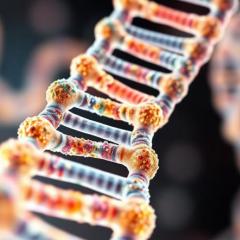Lions Medical Research Foundation Research Fellow, Dr Gethin Thomas, of the University of Queensland Diamantina Institute, has been awarded an NHMRC project grant worth $460,000 to investigate new avenues of treatment for Ankylosing Spondylitis.
Ankylosing Spondylitis (AS) is a form of arthritis that affects up to 0.5% of the population and involves chronic inflammation, particularly of the spinal and pelvic joints. A unique hallmark of this painful condition is that the inflammation triggers new bone growth at the affected joints, effectively fusing the spine and/or pelvis into a fixed position causing significant disability and a reduced quality of life and life expectancy.
The molecular triggers responsible for the switch to bone formation are not well understood. Consequently, there are no known treatments that can effectively prevent or reduce bone growth in AS.
Dr Thomas is particularly interested in a biochemical pathway called the Wnt pathway, which is crucial to normal bone formation. It is known that the Wnt pathway becomes switched on in AS.
In order to find out what is causing this, Dr Thomas plans to look at the complete time course of the condition in a mouse model of AS at the tissue, cell and molecular levels. At the same time he will look at which genes are turned on or off as the disease progresses toward bone formation.
In this way he hopes to gain a clearer understanding of the genetic basis of the disease as well as identify specific molecular ‘markers’ of bone formation. He then aims to look for these same markers in tissue samples from AS patients.
“By fully correlating the molecular changes with the tissue changes in affected joints we can identify the genes driving the joint fusion and target new therapies to slow or even reverse this debilitating disease,” Dr Thomas explains.
As part of this project Dr Thomas also plans to look at potential therapeutic interventions. Sclerostin is small protein known for its ability to specifically interrupt the action of the Wnt pathway, thereby preventing bone formation. Molecules that block sclerostin are currently being developed to stimulate bone formation for the treatment of osteoporosis, but using sclerostin itself to inhibit bone formation has never been examined in AS. By taking a closer look at the sclerostin’s effect on AS joint fusion, Dr Thomas aims to confirm the role of the Wnt pathway in AS and also hopes to identify a new therapeutic pathway for the condition.
Dr Thomas joined the UQ Diamantina Institute in 2005. He is a member of the Autoimmunity division, which focuses on diseases of immune regulation and works toward the development of novel immunotherapies.



